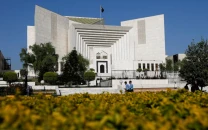SEPRA framework
SEPRA's success will also hinge on STDC controlling transmission infrastructure

Sindh's bold move to establish the Sindh Electric Power Regulatory Authority (SEPRA) promises liberation from Karachi's exorbitant power tariffs and K-Electric's monopoly. However, there is good reason to keep optimism cautious. Under the proposal, state-generated electricity will be transmitted via the Sindh Transmission and Dispatch Company (STDC) at provincially set tariffs. But there can be many a slip between the cup and the lip, and the sheer simplicity of the plan is evidence that several factors are being underplayed or ignored. For one, the plan, as it stands, is light on detail about where STDC would source electricity from, and how costs would be kept lower than K-Electric or other distributors.
Notably, most of the more affordable power producers in Sindh - including nuclear power plants — are owned by the federal government. Islamabad is unlikely to give Karachi or Sindh preferential treatment, leaving behind a handful of coal plants, or oil and gas-powered plants, for Sindh to source fuel from. Unfortunately, while local coal is generally not too expensive, it is also not ridiculously cheap, meaning prices may not decrease significantly. Meanwhile, dependence on imported fossil fuels could actually lead to a significant rise in power tariffs.
SEPRA's success will also hinge on STDC controlling transmission infrastructure, but existing distribution companies (DISCOs) in the province are mired in inefficiency, with soaring technical losses, frequent safety violations and poor recoveries, underscoring systemic governance failures. If the provincial government truly aims to implement a viable and effective plan, it must publish a transparent generation plan that prioritises renewables, including solar farms, and reform DISCO governance. Otherwise, SEPRA will be little more than another burn pit for taxpayers' money.















COMMENTS
Comments are moderated and generally will be posted if they are on-topic and not abusive.
For more information, please see our Comments FAQ